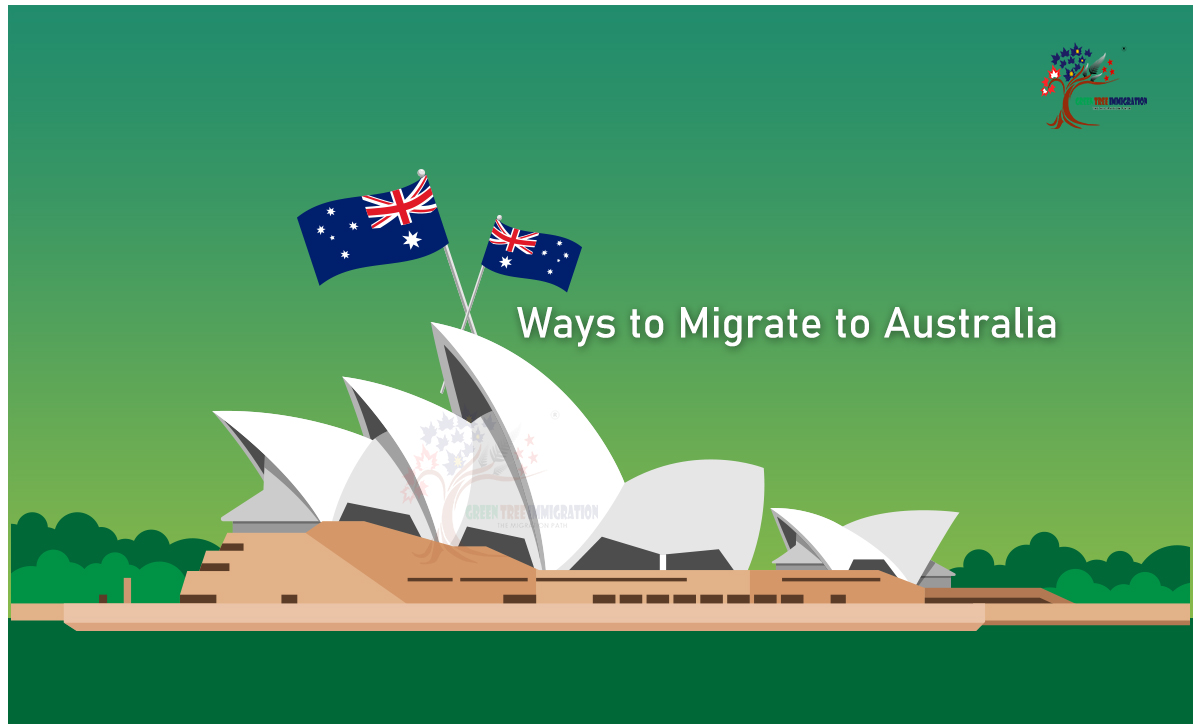Migrating to Australia is an exciting opportunity for individuals and families seeking new beginnings. Australia has become a top destination for permanent residency with a welcoming culture, abundant job opportunities, and breathtaking landscapes. This blog helps applicants learn more about the visa subclasses that will aid them in obtaining permanent residency in Australia.
Australian PR Visa Categories to Move Permanently in 2025
Applicants can move to Australia permanently under three visas:
- Australia Skilled Independent Visa (Subclass 189)
The skilled independent visa (Subclass 189) lets invited permanent residents with skills live, work, and settle anywhere in Australia permanently.
- Australia’s Skilled Nominated Visa (Subclass 190)
The skilled Nominated visa (Subclass 190) lets invited, nominated skilled permanent residents live, work, and settle anywhere in Australia permanently.
Applicants can also go on a work visa and eventually apply for permanent residency.
- Australia Skilled Work (Provisional) Visa (Subclass 491)
Australia’s subclass 491 skilled work (provisional) visa is generally a temporary visa with a validity of 5 years.
To avail of this visa, the applicant must be either sponsored by an eligible family member or nominated by any one of the Australian states or territories.
After 3 years of stay in the designated regional area of an Australian state or territory with applicable conditions, the applicant can apply for permanent residency through a subclass 191 visa [Permanent Residence (Skilled Regional) visa].
To acquire any of these visa statuses, the applicant must meet the following criteria:
- The applicant must have an appropriate occupation on the skilled occupation list (SOL).
- The applicant must make sure to have a positive skills assessment for the occupation.
- The applicant must fulfill the points system.
- Complete the EOI and obtain an invitation to apply from the Australian immigration department.
Also Read: Difference between 189 and 190 visa
Steps involved in Australian Permanent Residency
Step 1: Scrutinize the following criteria:
Prior to proceeding to apply for Australian permanent residency, the applicant must check if the following general criteria apply to them or not.
- Research if your skilled occupation list (SOL) is on the occupation list.
- The applicant must score 65 on the points grid.
- Check if you are eligible.
Step 2: Submission of the EOI
An expression of interest (EOI) must be submitted by the applicant to the Australian Immigration Department.
Step 3: Wait for the ITA.
After submitting the EOI, the applicant must wait for the invitation to apply for this visa.
Step 4: Gather the required documents
The necessary documents that are relevant to the EOI claims must be grouped and submitted, along with other essential documents that support the eligibility criteria.
Step 5: Apply for the visa
After receiving an invitation concerning the EOI, the applicant must apply for this visa within 60 days.
Significant Benefits of an Australian Permanent Residency
Australia, with its strong and healthy economy providing in-demand job offers to migrants from all over the world, has a greater prospect.
Australian permanent residency provides major benefits to its residents. Some of the significant benefits are provided here:
- Obtain Australian citizenship: After staying in Australia for a specific period, Australian permanent residents are eligible to apply for Australian citizenship.
- Ample job opportunities: Access to numerous in-demand jobs is exclusively available to permanent residents and citizens.
- Unlimited work rights: Australian permanent residents can work with any employer for unlimited hours without being sponsored or nominated.
- Prerogative options: Due to their permanent residency status, the residents can live, work, travel, and settle anywhere in Australia.
- Family members can accompany: Permanent residents can bring their family members to accompany them with official permission.
- Sponsor family members: Permanent residents of Australia can aid in the sponsorship of providing permanent residential status for family members.
- Capability to study unlimited: Permanent residents can study anywhere in Australia, like TAFEs and Australian universities, and also avail of loans.
- Citizenship and complimentary education for children: Children born in Australia to permanent residents acquire citizenship titles and can have free education.
- Social welfare and healthcare benefits: Permanent residents and their families can have boundless social welfare benefits via Centrelink and Medicare benefits.
- Acquire a first home owner grant: Permanent residents can get a first home owner grant of $10,000 AUD to buy a new house, apartment, or any building of a certain value.
Points allocation system for Australian Permanent Residency
The point-based allocation system for Australian permanent residency is point-based. The points system depends on numerous conditions such as age, qualifications, experience, and supplementary points for adaptability factors.
- Age
- Education Qualifications
- Work Experience (Onshore and Offshore experience)
- English Language Skills
- Spouse factors
- Adaptability Factors
General fees structure of Australian permanent resident visa
The general Australian permanent residency visa charges are mentioned below:
- Primary Applicant: $4115 AUD (2,28,501.18 INR approx.)
- Secondary Applicant (Spouse): $2055 AUD (1,14,111.77 INR approx.)
- Dependent kid (under 18 years): $1030 AUD (57,194.71 INR approx.)
Conclusion
There are two options for permanent migration to Australia in 2025, namely subclass 189 and subclass 190 visas. Before you apply, ensure you have all the required documentation and qualifications to be eligible. It’s also advisable to speak to our Australian immigration experts to ensure your application is accurate and complete. Migrating to Australia is an exciting opportunity, and it’s worth putting in the time and effort to make it happen!




